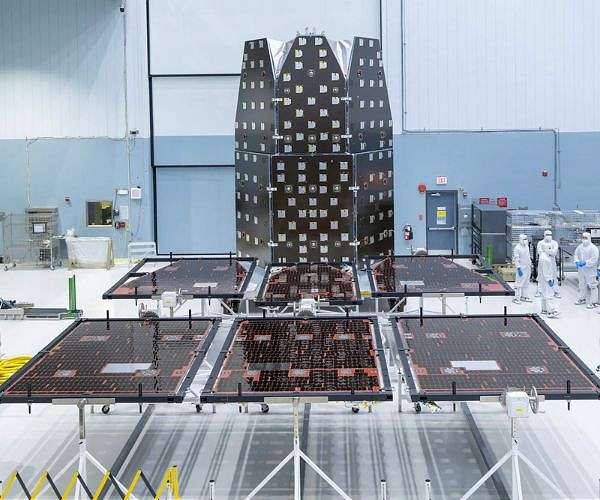Solar panels for Roman space telescope complete testing
The solar panel sunshade for NASA’s Nancy Grace Roman Space Telescope has successfully passed a series of critical tests, keeping assembly on track for on-time completion. These solar panels are essential for powering and shading the observatory, enabling mission-critical observations while maintaining optimal instrument temperatures.
The Roman team has developed two sets of panels: one intended for flights aboard the observatory and one for preliminary testing purposes.
At NASA’s Goddard Space Flight Center in Greenbelt, Maryland, engineers assessed the test version in a thermal vacuum chamber. This chamber mimics the extreme temperatures and low-pressure environment that the flight panels encounter in space. Since the panels will be stowed during launch, the team also rehearsed their deployment under space-like conditions.
At the same time, a supplier equipped the flight version with solar cells. Upon arrival in Goddard, technicians tested the solar cells by exposing the panels to bright light that simulates sunlight.
“We save a significant amount of time and money by using two versions of the panels, as we can do a lot of preliminary testing on a spare part, while with the flight version we can move further in the process,” says Jack Marshall, from Solar Array Sun . Shield Leader at NASA Goddard. “It streamlines the process and also avoids the risk of damage to the panels going to the observatory should testing reveal an error.”
The flight version of the Solar Array Sun Shield will be installed on the Roman spacecraft next spring. After this, the entire spacecraft will undergo extensive testing to ensure its durability during launch and expected performance in space.


